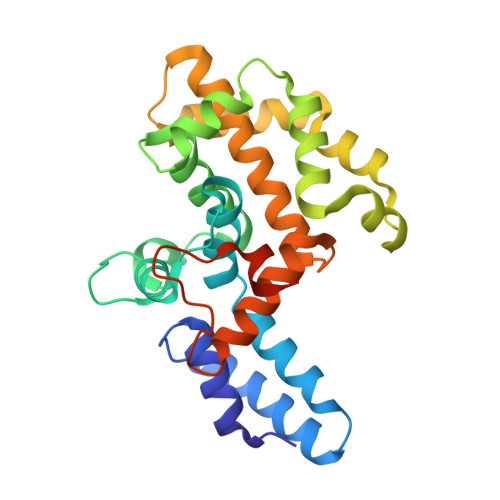High-resolution mapping of metal ions reveals principles of surface layer assembly in Caulobacter crescentus cells.
Herdman, M., von Kugelgen, A., Kureisaite-Ciziene, D., Duman, R., El Omari, K., Garman, E.F., Kjaer, A., Kolokouris, D., Lowe, J., Wagner, A., Stansfeld, P.J., Bharat, T.A.M.(2022) Structure 30: 215
- PubMed: 34800371
- DOI: https://doi.org/10.1016/j.str.2021.10.012
- Primary Citation of Related Structures:
7PEO - PubMed Abstract:
Surface layers (S-layers) are proteinaceous crystalline coats that constitute the outermost component of most prokaryotic cell envelopes. In this study, we have investigated the role of metal ions in the formation of the Caulobacter crescentus S-layer using high-resolution structural and cell biology techniques, as well as molecular simulations. Utilizing optical microscopy of fluorescently tagged S-layers, we show that calcium ions facilitate S-layer lattice formation and cell-surface binding. We report all-atom molecular dynamics simulations of the S-layer lattice, revealing the importance of bound metal ions. Finally, using electron cryomicroscopy and long-wavelength X-ray diffraction experiments, we mapped the positions of metal ions in the S-layer at near-atomic resolution, supporting our insights from the cellular and simulations data. Our findings contribute to the understanding of how C. crescentus cells form a regularly arranged S-layer on their surface, with implications on fundamental S-layer biology and the synthetic biology of self-assembling biomaterials.
- Sir William Dunn School of Pathology, University of Oxford, Oxford OX1 3RE, UK.
Organizational Affiliation:



















